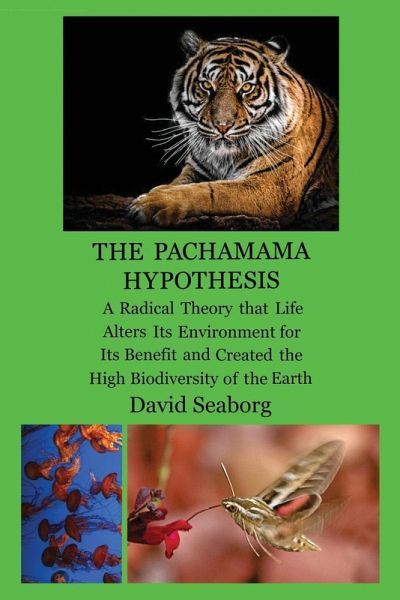
THE PACHAMAMA HYPOTHESIS A Radical Hypothesis that Life Alters its Environment for its Benefit and Created the High Biodiversity of the Glorious Green Planet Earth
Versandkostenfrei!
Versandfertig in 1-2 Wochen
41,99 €
inkl. MwSt.

PAYBACK Punkte
21 °P sammeln!
This book presents an exciting, original hypothesis that states that ecosystems maximize biodiversity, that all species improve their ecosystem for life and biodiversity under natural conditions, and that life made Earth better for living organisms. Symbiosis is far more important than recognized. Predators and their prey are actually in a symbiotic relationship, since the prey species benefits by being regulated by the predator and hence not destroying its environment. DNA has an inherent tendency to become variable and occasionally promote great adaptive evolutionary change, which leads to s...
This book presents an exciting, original hypothesis that states that ecosystems maximize biodiversity, that all species improve their ecosystem for life and biodiversity under natural conditions, and that life made Earth better for living organisms. Symbiosis is far more important than recognized. Predators and their prey are actually in a symbiotic relationship, since the prey species benefits by being regulated by the predator and hence not destroying its environment. DNA has an inherent tendency to become variable and occasionally promote great adaptive evolutionary change, which leads to spectacular diversification into many new species. The reader of this fascinating book will become well versed in current evolutionary and ecological theory. It is a must read for anyone interested in the new biology of today. In discussions with Seaborg before this book was written, Harvard evolutionary biologist Edward O. Wilson found Seaborg's hypothesis of merit and interesting. James Lovelock, co-author of the Gaia Hypothesis, encouraged Seaborg to pursue his hypothesis.


